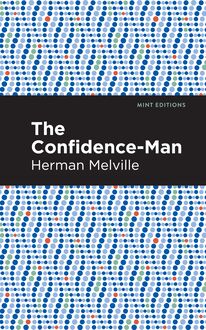-
 Univers
Univers
-
 Ebooks
Ebooks
-
 Livres audio
Livres audio
-
 Presse
Presse
-
 Podcasts
Podcasts
-
 BD
BD
-
 Documents
Documents
-
- Cours
- Révisions
- Ressources pédagogiques
- Sciences de l’éducation
- Manuels scolaires
- Langues
- Travaux de classe
- Annales de BEP
- Etudes supérieures
- Maternelle et primaire
- Fiches de lecture
- Orientation scolaire
- Méthodologie
- Corrigés de devoir
- Annales d’examens et concours
- Annales du bac
- Annales du brevet
- Rapports de stage
La lecture à portée de main
Vous pourrez modifier la taille du texte de cet ouvrage
Découvre YouScribe en t'inscrivant gratuitement
Je m'inscrisDécouvre YouScribe en t'inscrivant gratuitement
Je m'inscrisEn savoir plus
Vous pourrez modifier la taille du texte de cet ouvrage
En savoir plus

Description
Told from the perspective of a cantankerous man named Deidrick Knickerbocker, A Knickerbocker’s History of New York depicts a satirical history spanning from the world’s creation to the end of the Dutch dynasty. Beginning with the start of time itself, Knickerbocker reveals historical anecdotes, both real and imagined featuring social commentary, fresh perspectives on the past, and conversations with powerful historical figures. With humor and intrigue, A Knickerbocker’s History of New York tells the tale of the discovery of New York, and explores the first Dutch settlements. While examining those origins, Knickerbocker muses about the ethics of colonization and the immoral treatment of Native Americans, with biting and brutal honesty. Still under the Dutch “rule”, 1600 New York acted as one of the breeding grounds for many American Christmas traditions, some of which are still alive today. Under a comical microscope, A Knickerbocker’s History of New York explores the effect the early Dutch settlements have on American culture, particularly in New York.
Originally published in 1809, Washington Irving’s A Knickerbocker’s History of New York earned acclaim for its innovative genre as one of the first American comedic works. With the mix of specific, inside jokes and universal humor, Irving’s satire invites laughter from both his original audience and contemporary readers. With prose and wit that has remained fresh and hilarious even two-hundred and eleven years later, Washington Irving’s A Knickerbocker’s History of New York contains a narrative that has earned centuries of influence. While playfully mocking both classic literature and historians, Irving was bold enough to even include a list of people, professions and properties that he intended to make fun of. Though Irving mixes fact with fiction, A Knickerbocker’s History of New York provides useful insight on the history of Dutch Americans, as well as contributing thoughtful social commentary that finds itself still applicable to modern society.
Now featuring a stunning new cover design and a modern font, this edition of Washington Irving’s A Knickerbocker’s History of New York is both accessible and entertaining.
Sujets
Informations
| Publié par | Mint Editions |
| Date de parution | 05 janvier 2021 |
| Nombre de lectures | 0 |
| EAN13 | 9781513274669 |
| Langue | English |
| Poids de l'ouvrage | 1 Mo |
Informations légales : prix de location à la page 0,0500€. Cette information est donnée uniquement à titre indicatif conformément à la législation en vigueur.
Extrait
A Knickerbocker’s History of New York
Washington Irving
A Knickerbocker’s History of New York was first published in 1809.
This edition published by Mint Editions 2021.
ISBN 9781513269665 | E-ISBN 9781513274669
Published by Mint Editions®
minteditionbooks.com
Publishing Director: Jennifer Newens
Design & Production: Rachel Lopez Metzger
Typesetting: Westchester Publishing Services
C ONTENTS B OOK I . C ONTAINING D IVERS I NGENIOUS T HEORIES AND P HILOSOPHIC S PECULATIONS, C ONCERNING THE C REATION AND P OPULATION OF THE W ORLD, AS C ONNECTED WITH THE H ISTORY OF N EW Y ORK I II III IV V B OOK II . T REATING OF THE F IRST S ETTLEMENT OF THE P ROVINCE OF N IEUW N EDERLANDTS I II III IV V VI VII VIII IX B OOK III . I N W HICH IS R ECORDED THE G OLDEN R EIGN OF W OUTER V AN T WILLER I II III IV V VI VII VIII IX B OOK IV . C ONTAINING THE C HRONICLES OF THE R EIGN OF W ILLIAM THE T ESTY I II III IV V VI VII VIII IX X XI XII B OOK V . C ONTAINING THE F IRST P ART OF THE R EIGN OF P ETER S TUYVESANT, AND H IS T ROUBLES WITH THE A MPHICTYONIC C OUNCIL I II III IV V VI VII VIII IX B OOK VI . C ONTAINING THE S ECOND P ART OF THE R EIGN OF P ETER THE H EADSTRONG, AND H IS G ALLANT A CHIEVEMENTS ON THE D ELAWARE I II III IV V VI VII VIII IX B OOK VII . C ONTAINING THE T HIRD P ART OF THE R EIGN OF P ETER THE H EADSTRONG— H IS T ROUBLES WITH THE B RITISH N ATION, AND THE D ECLINE AND F ALL OF THE D UTCH D YNASTY I II III IV V VI VII VIII IX X XI XII XIII
BOOK I
CONTAINING DIVERS INGENIOUS THEORIES AND PHILOSOPHIC SPECULATIONS, CONCERNING THE CREATION AND POPULATION OF THE WORLD, AS CONNECTED WITH THE HISTORY OF NEW YORK
I
A ccording to the best authorities, the world in which we dwell is a huge, opaque, reflecting, inanimate mass, floating in the vast ethereal ocean of infinite space. It has the form of an orange, being an oblate spheroid, curiously flattened at opposite parts, for the insertion of two imaginary poles, which are supposed to penetrate and unite at the center; thus forming an axis on which the mighty orange turns with a regular diurnal revolution.
The transitions of light and darkness, whence proceed the alternations of day and night, are produced by this diurnal revolution successively presenting the different parts of the earth to the rays of the sun. The latter is, according to the best, that is to say, the latest, accounts a luminous or fiery body, of a prodigious magnitude, from which this world is driven by a centrifugal or repelling power, and to which it is drawn by a centripetal or attractive force; otherwise called the attraction of gravitation; the combination, or rather the counteraction, of these two opposing impulses producing a circular and annual revolution. Hence result the different seasons of the year—viz., spring, summer, autumn, and winter.
This I believe to be the most approved modern theory on the subject; though there be many philosophers who have entertained very different opinions; some, too, of them entitled to much deference from their great antiquity and illustrious characters. Thus it was advanced by some of the ancient sages that the earth was an extended plain, supported by vast pillars; and by others that it rested on the head of a snake, or the back of a huge tortoise; but as they did not provide a resting place for either the pillars or the tortoise, the whole theory fell to the ground for want of proper foundation.
The Brahmins assert, that the heavens rest upon the earth, and the sun and moon swim therein like fishes in the water, moving from east to west by day, and gliding along the edge of the horizon to their original stations during the night; while, according to the Pauranicas of India, it is a vast plain, encircled by seven oceans of mild, nectar, and other delicious liquids; that it is studded with seven mountains, and ornamented in the center by a mountainous rock of burnished gold; and that a great dragon occasionally swallows up the moon, which accounts for the phenomena of lunar eclipses.
Beside these, and many other equally sage opinions, we have the profound conjectures of Aboul-Hassan-Aly, son of Al Khan, son of Aly, son of Abderrahman, son of Abdallah, son of Masoud el-Hadheli, who is commonly called Masoudi, and surnamed Cothbeddin, but who takes the humble title of Laheb-ar-rasoul, which means the companion of the ambassador of God. He has written a universal history, entitled, “Mouroudge-ed-dharab or the Golden Meadows, and the Mines of Precious Stones.” In this valuable work he has related the history of the world, from the creation down to the moment of writing; which was under the Khaliphat of Mothi Billah, in the month Dgioumadi-el-aoual of the 336th year of the Hegira or flight of the Prophet. He informs us that the earth is a huge bird, Mecca and Medina constitute the head, Persia and India the right wing, the land of Gog the left wing, and Africa the tail. He informs us moreover, that an earth has existed before the present (which he considers as a mere chicken of 7,000 years), that it has undergone divers deluges, and that, according to the opinion of some well-informed Brahmins of his acquaintance; it will be renovated every seventy thousandth hazarouam; each hazarouam consisting of 12,000 years.
These are a few of the many contradictory opinions of philosophers concerning the earth, and we find that the learned have had equal perplexity as to the nature of the sun. Some of the ancient philosophers have affirmed that it is a vast wheel of brilliant fire; others that it is merely a mirror or sphere of transparent crystal; and a third class, at the head of whom stands Anaxagoras, maintained that it was nothing but a huge ignited mass of iron or stone—indeed he declared the heavens to be merely a vault of stone—and that the stars were stones whirled upward from the earth, and set on fire by the velocity of its revolutions. But I give little attention to the doctrines of this philosopher, the people of Athens having fully refuted them by banishing him from their city; a concise mode of answering unwelcome doctrines, much resorted to in former days. Another sect of philosophers do declare, that certain fiery particles exhale constantly from the earth, which, concentrating in a single point of the firmament by day, constitute the sun, but being scattered and rambling about in the dark at night, collect in various points, and form stars. These are regularly burnt out and extinguished, not unlike to the lamps in our streets, and require a fresh supply of exhalations for the next occasion.
It is even recorded that at certain remote and obscure periods, in consequence of a great scarcity of fuel, the sun has been completely burnt out, and sometimes not rekindled for a month at a time. A most melancholy circumstance, the very idea of which gave vast concern to Heraclitus, that worthy weeping philosopher of antiquity. In addition to these various speculations, it was the opinion of Herschel that the sun is a magnificent, habitable abode; the light it furnishes arising from certain empyreal, luminous or phosphoric clouds, swimming in its transparent atmosphere.
But we will not enter further at present into the nature of the sun, that being an inquiry not immediately necessary to the development of this history; neither will we embroil ourselves in any more of the endless disputes of philosophers touching the form of this globe, but content ourselves with the theory advanced in the beginning of this chapter, and will proceed to illustrate by experiment the complexity of motion therein described to this our rotatory planet.
Professor Von Poddingcoft (or Puddinghead, as the name may be rendered into English) was long celebrated in the University of Leyden for profound gravity of deportment and a talent at going to sleep in the midst of examinations, to the infinite relief of his hopeful students, who thereby worked their way through college with great ease and little study. In the course of one of his lectures, the learned professor seizing a bucket of water swung it around his head at arm’s length. The impulse with which he threw the vessel from him, being a centrifugal force, the retention of his arm operating as a centripetal power, and the bucket, which was a substitute for the earth, describing a circular orbit round about the globular head and ruby visage of Professor Von Poddingcoft, which formed no bad representation of the sun. All of these particulars were duly explained to the class of gaping students around him. He apprised them, moreover, that the same principle of gravitation which retained the water in the bucket restrains the ocean from flying from the earth in its rapid revolutions; and he farther informed them that should the motion of the earth be suddenly checked, it would incontinently fall into the sun, through the centripetal force of gravitation: a most ruinous event to this planet, and one which would also obscure, though it most probably would not extinguish, the solar luminary. An unlucky stripling, one of those vagrant geniuses who seem sent into the world merely to annoy worthy men of the puddinghead order, desirous of ascertaining the correctness of the experiment, suddenly arrested the arm of the professor just at the moment that the bucket was in its zenith, which immediately descended with astonishing precision upon the philosophic head of the instructor of youth. A hollow sound, and a red-hot hiss, attended the contact; but the theory was in the amplest manner illustrated, for the unfortunate bucket perished in the conflict; but the blazing countenance of Professor Von Poddingcoft emerged from amidst the waters, glowing fiercer than ever with unutterable indignation, whereby the students were marvelously edified, and departed considerably wiser than before.
It is a mortifying circumstance, which greatly perplexes many a painstaking philosopher, that nature often refuses to second
-
 Univers
Univers
-
 Ebooks
Ebooks
-
 Livres audio
Livres audio
-
 Presse
Presse
-
 Podcasts
Podcasts
-
 BD
BD
-
 Documents
Documents
-
Jeunesse
-
Littérature
-
Ressources professionnelles
-
Santé et bien-être
-
Savoirs
-
Education
-
Loisirs et hobbies
-
Art, musique et cinéma
-
Actualité et débat de société
-
Jeunesse
-
Littérature
-
Ressources professionnelles
-
Santé et bien-être
-
Savoirs
-
Education
-
Loisirs et hobbies
-
Art, musique et cinéma
-
Actualité et débat de société
-
Actualités
-
Lifestyle
-
Presse jeunesse
-
Presse professionnelle
-
Pratique
-
Presse sportive
-
Presse internationale
-
Culture & Médias
-
Action et Aventures
-
Science-fiction et Fantasy
-
Société
-
Jeunesse
-
Littérature
-
Ressources professionnelles
-
Santé et bien-être
-
Savoirs
-
Education
-
Loisirs et hobbies
-
Art, musique et cinéma
-
Actualité et débat de société
- Cours
- Révisions
- Ressources pédagogiques
- Sciences de l’éducation
- Manuels scolaires
- Langues
- Travaux de classe
- Annales de BEP
- Etudes supérieures
- Maternelle et primaire
- Fiches de lecture
- Orientation scolaire
- Méthodologie
- Corrigés de devoir
- Annales d’examens et concours
- Annales du bac
- Annales du brevet
- Rapports de stage




















